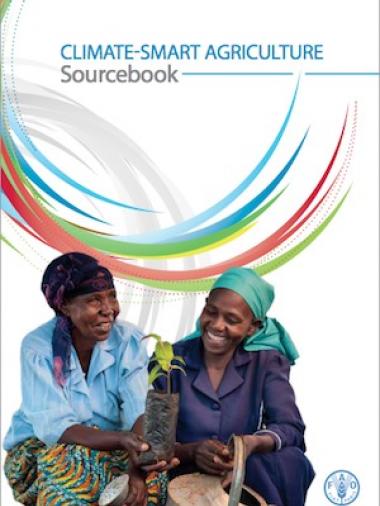Climate-smart agriculture sourcebook

Between now and 2050, the world’s population will increase by one-third. Most of these additional 2 billion people will live in developing countries. At the same time, more people will be living in cities. If current income and consumption growth trends continue, FAO estimates that agricultural production will have to increase by 60 percent by 2050 to satisfy the expected demands for food and feed. Agriculture must therefore transform itself if it is to feed a growing global population and provide the basis for economic growth and poverty reduction. Climate change will make this task more difficult under a business-as-usual scenario, due to adverse impacts on agriculture, requiring spiralling adaptation and related costs. To achieve food security and agricultural development goals, adaptation to climate change and lower emission intensities per output will be necessary. This transformation must be accomplished without depletion of the natural resource base. Climate change is already having an impact on agriculture and food security as a result of increased prevalence of extreme events and increased unpredictability of weather patterns. This can lead to reductions in production and lower incomes in vulnerable areas. These changes can also affect global food prices. Developing countries and smallholder farmers and pastoralists in particular are being especially hard hit by these changes. Many of these small-scale producers are already coping with a degraded natural resource base. They often lack knowledge about potential options for adapting their production systems and have limited assets and risk-taking capacity to access and use technologies and financial services.
Enhancing food security while contributing to mitigate climate change and preserving the natural resource base and vital ecosystem services requires the transition to agricultural production systems that are more productive, use inputs more efficiently, have less variability and greater stability in their outputs, and are more resilient to risks, shocks and long-term climate variability. More productive and more resilient agriculture requires a major shift in the way land, water, soil nutrients and genetic resources are managed to ensure that these resources are used more efficiently. Making this shift requires considerable changes in national and local governance, legislation, policies and financial mechanisms. This transformation will also involve improving producers’ access to markets. By reducing greenhouse gas emissions per unit of land and/or agricultural product and increasing carbon sinks, these changes will contribute significantly to the mitigation of climate change.
Citation
FAO. 2013. Climate-smart agriculture sourcebook. Rome, Italy: Food and Agriculture Organization of the United Nations (FAO).